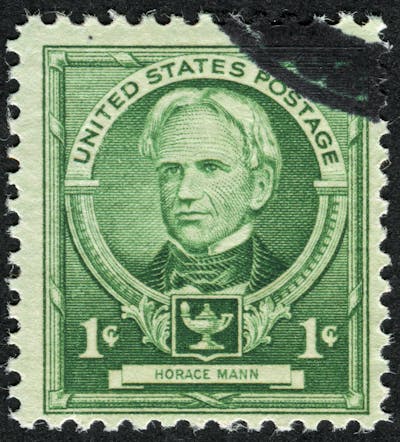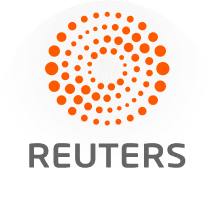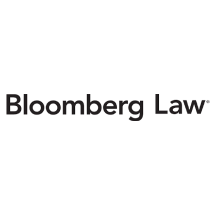While the White House’s fight with elite universities such as Columbia and Harvard has recently dominated the headlines, the feud overshadows the broader and more far-reaching assault on K-12 public education by the Trump administration and many states.
The Trump administration has gutted the Department of Education, imperiling efforts to protect students’ civil rights, and proposed billions in public education cuts for fiscal year 2026. Meanwhile, the administration is diverting billions of taxpayer funds into K-12 private schools. These moves build upon similar efforts by conservative states to rein in public education going back decades.
But the consequences of withdrawing from public education could be dire for the U.S. In our 2024 book, “How Government Built America,” we explore the history of public education, from Horace Mann’s “common school movement” in the early 19th century to the GI Bill in the 20th that helped millions of veterans go to college and become homeowners after World War II.
We found that public education has been essential for not only creating an educated workforce but for inculcating the United States’ fundamental values of liberty, equality, fairness and the common good.
In the public good
Opponents of public education often refer to public schools as “government schools,” a pejorative that seems intended to associate public education with “big government” – seemingly at odds with the small government preference of many Americans.
But, as we have previously explored, government has always been a significant partner with the private market system in achieving the country’s fundamental political values. Public education has been an important part of that partnership.
Education is what economists call a public good, which means it not only benefits students but the country as well.
Mann, an education reformer often dubbed the father of the American public school system, argued that universal, publicly funded, nonsectarian public schools would help sustain American political institutions, expand the economy and fend off social disorder.

In researching Mann’s common schools and other educational history for our book, two lessons stood out to us.
One is that the U.S. investment in public education over the past 150 years has created a well-educated workforce that has fueled innovation and unparalleled prosperity.
As our book documents, for example, in the late 18th and early 19th centuries the states expanded public education to include high school to meet the increasing demand for a more educated citizenry as a result of the Industrial Revolution. And the GI Bill made it possible for returning veterans to earn college degrees or train for vocations, support young families and buy homes, farms or businesses, and it encouraged them to become more engaged citizens, making “U.S. democracy more vibrant in the middle of the twentieth century.”
The other, equally significant lesson is that the democratic and republican principals that propelled Mann’s vision of the common school have colored many Americans’ assumptions about public schooling ever since. Mann’s goal was a “virtuous republican citizenry” – that is, a citizenry educated in “good citizenship, democratic participation and societal well-being.”
Mann believed there was nothing more important than “the proper training of the rising generation,” calling it the country’s “highest earthly duty.”
Attacking public education
Today, Mann’s vision and all that’s been accomplished by public education is under threat.
Trump’s second term has supercharged efforts by conservatives over the past 75 years to control what is taught in the public schools and to replace public education with private schools.
Most notably, Trump has begun dismantling the Department of Education to devolve more policymaking to the state level. The department is responsible for, among other things, distributing federal funds to public schools, protecting students’ civil rights and supporting high-quality educational research. It has also been responsible for managing over a trillion dollars in student loans – a function that the administration is moving to the Small Business Administration, which has no experience in loan management.
The president’s March 2025 executive order has slashed the department’s staff in half, with especially deep cuts to the Office for Civil Rights, which, as noted, protects student from illegal discrimination.
Trump’s efforts to slash education funding has so far hit roadblocks with Congress and the public. The administration is aiming to cut education funding by US$12 billion for fiscal year 2026, which Congress is currently negotiating.
And contradicting its stance on ceding more control to states and local communities, the administration has also been mandating what can’t and must be taught in public schools. For example, it’s threatened funding for school districts that recognize transgender identities or teach about structural racism, white privilege and similar concepts. On the other hand, the White House is pushing the use of “patriotic” education that depicts the founding of the U.S. as “unifying, inspiring and ennobling.”

Promoting private education
As Trump and states have cut funding and resources to public education, they’ve been shifting more money to K-12 private schools.
Most recently, the budget bill passed by Congress in July 2025 gives taxpayers a tax credit for donations to organizations that fund private school scholarships. The credit, which unlike a deduction counts directly against how much tax someone owes, is $1,700 for individuals and double for married couples. The total cost could run into the billions, since it’s unclear how many taxpayers will take advantage.
Meanwhile, 33 states direct public money toward private schools by providing vouchers, tax credits or another form of financial assistance to parents. All together, states allocated $8.2 billion to support private school education in 2024.
Government funding of private schools diverts money away from public education and makes it more difficult for public schools to provide the quality of education that would most benefit students and the public at large. In Arizona, for example, many public schools are closing their doors permanently as a result of the state’s support for charter schools, homeschooling and private school vouchers.
That’s because public schools are funded based on how many students they have. As more students switch to private schools, there’s less money to cover teacher salaries and fixed costs such as building maintenance. Ultimately, that means fewer resources to educate the students who remain in the public school system.
Living up to aspirations
We believe the harm to the country of promoting private schools while rolling back support for public education is about more than dollars and cents.
It would mean abandoning the principle of universal, nonsectarian education for America’s children. And in so doing, Mann’s “virtuous citizenry” will be much harder to build and maintain.
America’s private market system, in which individuals are free to contract with each other with minimal government interference, has been important to building prosperity and opportunity in the U.S., as our book documents. But, as we also establish, relying on private markets to educate America’s youth makes it harder to create equal opportunity for children to learn and be economically successful, leaving the country less prosperous and more divided.
This article is republished from The Conversation, a nonprofit, independent news organization bringing you facts and trustworthy analysis to help you make sense of our complex world. It was written by: Sidney Shapiro, Wake Forest University and Joseph P. Tomain, University of Cincinnati
Read more:
- In LGBTQ+ storybook case, Supreme Court handed a win to parental rights, raising tough questions for educators
- Trump orders a plan to close Education Department – an anthropologist who studies MAGA explains 4 reasons why Trump and his supporters want to eliminate it
- What would it mean if President-elect Trump dismantled the US Department of Education?
Sidney Shapiro is affiliated with the Center for Progressive Refrom.
Joseph P. Tomain does not work for, consult, own shares in or receive funding from any company or organization that would benefit from this article, and has disclosed no relevant affiliations beyond their academic appointment.


 The Conversation
The Conversation
 America News
America News Associated Press US and World News Video
Associated Press US and World News Video Associated Press US News
Associated Press US News AlterNet
AlterNet Reuters US Domestic
Reuters US Domestic Reuters US Top
Reuters US Top Raw Story
Raw Story Bloomberg Law
Bloomberg Law